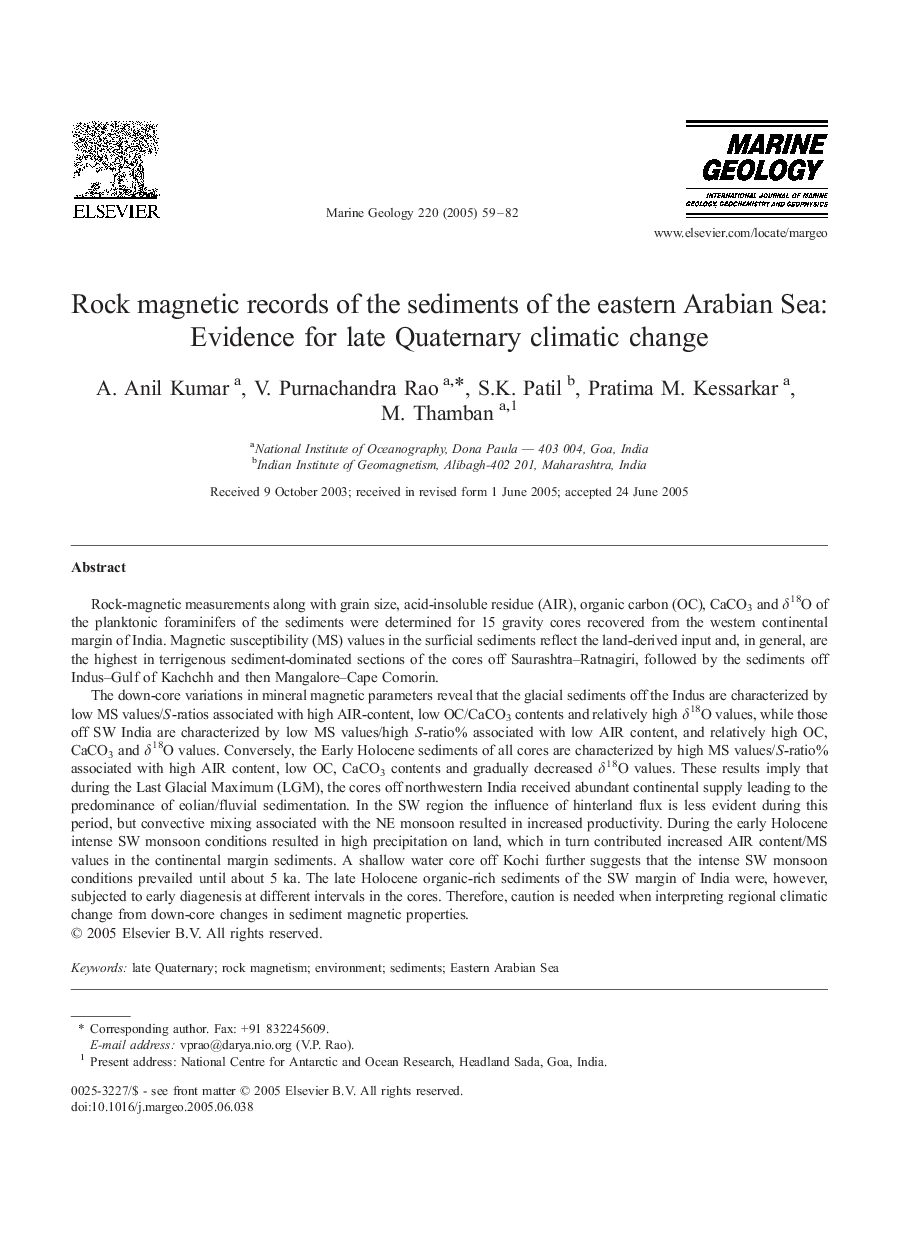| Article ID | Journal | Published Year | Pages | File Type |
|---|---|---|---|---|
| 9532483 | Marine Geology | 2005 | 24 Pages |
Abstract
The down-core variations in mineral magnetic parameters reveal that the glacial sediments off the Indus are characterized by low MS values/S-ratios associated with high AIR-content, low OC/CaCO3 contents and relatively high δ18O values, while those off SW India are characterized by low MS values/high S-ratio% associated with low AIR content, and relatively high OC, CaCO3 and δ18O values. Conversely, the Early Holocene sediments of all cores are characterized by high MS values/S-ratio% associated with high AIR content, low OC, CaCO3 contents and gradually decreased δ18O values. These results imply that during the Last Glacial Maximum (LGM), the cores off northwestern India received abundant continental supply leading to the predominance of eolian/fluvial sedimentation. In the SW region the influence of hinterland flux is less evident during this period, but convective mixing associated with the NE monsoon resulted in increased productivity. During the early Holocene intense SW monsoon conditions resulted in high precipitation on land, which in turn contributed increased AIR content/MS values in the continental margin sediments. A shallow water core off Kochi further suggests that the intense SW monsoon conditions prevailed until about 5 ka. The late Holocene organic-rich sediments of the SW margin of India were, however, subjected to early diagenesis at different intervals in the cores. Therefore, caution is needed when interpreting regional climatic change from down-core changes in sediment magnetic properties.
Related Topics
Physical Sciences and Engineering
Earth and Planetary Sciences
Geochemistry and Petrology
Authors
A. Anil Kumar, V. Purnachandra Rao, S.K. Patil, Pratima M. Kessarkar, M. Thamban,
